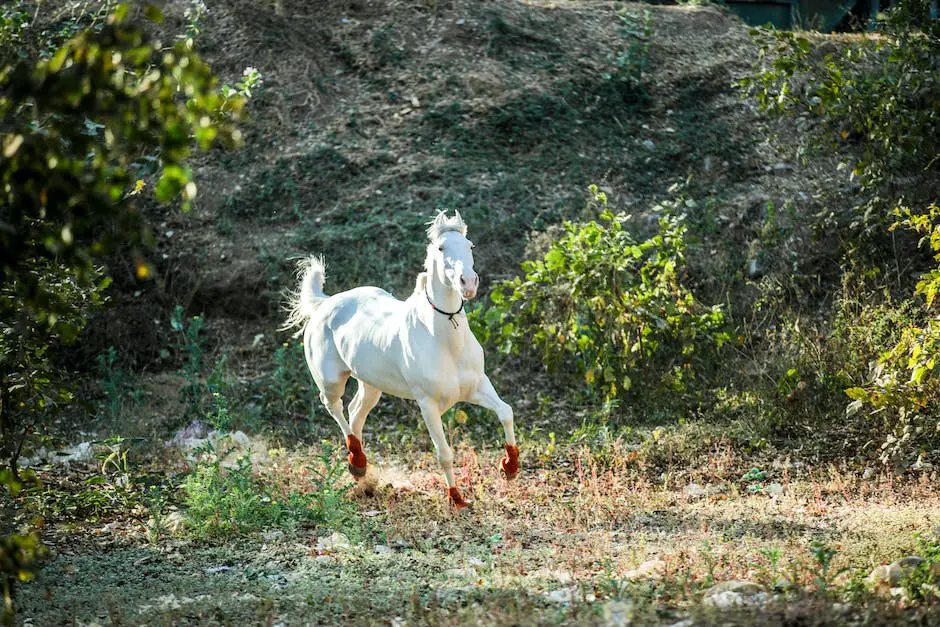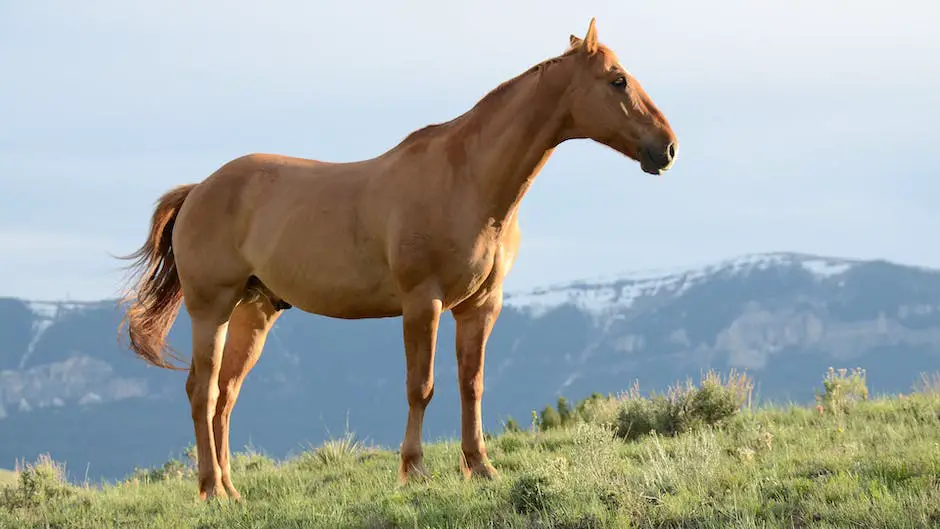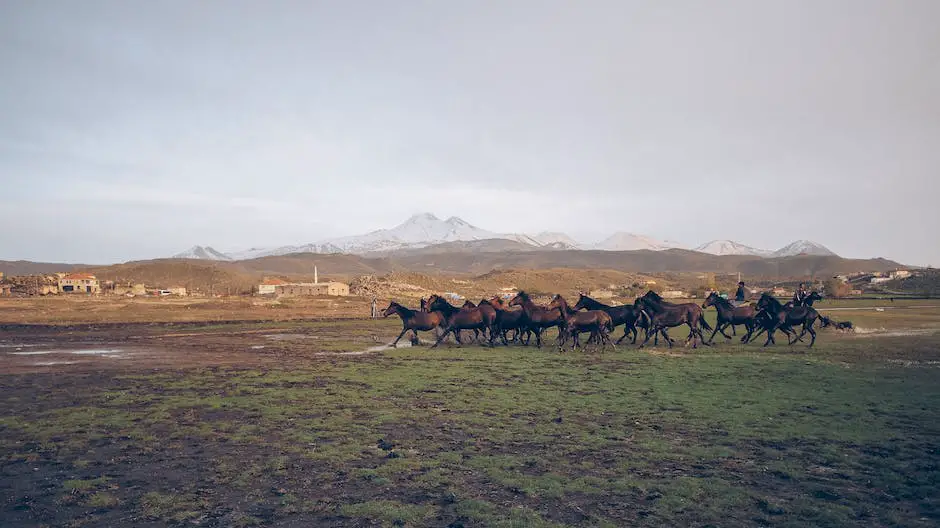Whether you’re an equestrian enthusiast or a seasoned horse professional, understanding the distinct characteristics of warmblood horses is crucial to providing them with optimal care. While similarities exist between caring for various horse breeds, warmbloods present unique requirements and characteristics that warrant dedicated study. This treatise explores the complex nature of these magnificent beasts, from their fascinating origins and interesting physical attributes to their temperament. Discussed further is the art of providing well-crafted nutritional routines, precise exercise regimens, and suitable housing conditions that are tailored to meet their needs. Lastly, we will delve into the often overlooked aspect of horse care – effective healthcare and veterinary routines – that ensure your warmblood maintains its vitality and longevity.
Table of Contents (Horspedia)
Understanding Warmblood Horses
Title: The Majesty of Warmbloods: Unraveling Their Unique Traits and Care Needs
Hello, fellow equestrians and horse lovers! Let’s dive into the mesmerizing world of Warmbloods, an exceptional breed that captivates the hearts of many. Warmbloods are truly one-of-a-kind, they possess unique characteristics and require specialized care that makes their handling particularly intriguing.
One of the appealing aspects of Warmbloods is their rich genetic diversity. This breed isn’t about purity, but about performance. Originating from Europe, Warmbloods are a collection of middle-weight horses created by mixing hot-blooded Arabs and Thoroughbreds with heavier, cold-blooded draught horses. The result? An outstanding breed that masterfully balances strength with agility!
And how could we forget their stunning physique? Warmbloods are a sight to behold, typically standing between 15.2 and 17.2 hands high. They possess sturdy, well-proportional bodies, finely-carved heads, long, lean necks, and powerful quarters – perfect for show jumping, dressage, and eventing.
But, they don’t just have looks. This breed also boasts brilliant temperament. Warmbloods are renowned for their intelligence, alertness, willingness to work, and calm demeanor. They exhibit a captivating blend of docility seen in cold-bloods combined with the sharp athleticism observed in hot-bloods.
So, with all these qualities, it’s clear why Warmbloods demand a unique care regimen that is just as exceptional as they are!
Firstly, Warmbloods require a balanced diet that fuels their athletic prowess. This entails quality hay, grain concentrates, and supplements, tailored to their unique nutritional needs, fitness levels, and age. Remember, a well-fed Warmblood is a happy runner!
Next, Warmbloods need consistent exercise to maintain their strength and agility. Whether it’s lunging, groundwork, trail riding, or dressage training, exercising these athletes fosters their agility, muscular strength, and overall health.
Lastly, don’t neglect regular vet and farrier visits. Warmbloods are prone to certain illnesses like osteochondrosis dessecans (OCD), and regular check-ups can catch potential issues upfront. Prompt hoof care is significant for their performance. Remember, their hooves support the weight of their sturdy bodies and aid their athletic activities, so keeping them in top shape is crucial.
Surely by now, you’ll agree, Warmbloods are anything but ordinary! Their intriguing genetic makeup, distinguished looks, and admirable temperament make them a breed like no other. Remember, to maintain their glorious reputation, these horses also demand exceptional care. An understanding of the unique requirements of Warmbloods helps ensure these magnificent athletes live a healthy, happy life while delivering exhilarating performances that continually capture our hearts. Happy riding, equestrian enthusiasts!

Nutritional Requirements of Warmblood Horses
Building from our earlier discussions, we now dig into the intricacies of proper dietary planning for warmblood horses. The aim is not only to meet their nutritional needs but to optimize their performance, health, and well-being.
Warmblood horses’ dietary requirements differ significantly from those of other breeds due to their unique physiological makeup predisposing them to intense physical activity. Their diet should thus be high-energy, yet balanced to prevent the affliction of obesity or other diet-related health conditions.
To satisfy their energy needs, the diet of a warmblood horse should be rich in carbohydrates, primarily made up of forages such as hay and grass. Roughage not only provides vital vitamins and minerals, but also promotes better digestion and aids in preventing gastric ulcers, a common health problem among this breed. On average, an adult warmblood horse should consume 1.5-2.5% of its body weight in forage daily.
Additions of grains like oats, barley, and corn are necessary for additional energy. Since these horses exert a great deal of energy during their activity period, maintaining their strength with these grains decreases muscle fatigue and shortens recovery. However, care should be taken so as not to overfeed grains while compromising their digestive health.
Adding to this, warmblood horses need considerable amounts of quality protein in their diet to aid their muscle development and repair. Protein sources like soybean meal or alfalfa are excellent supplements, contributing to their overall growth and development.
Equally crucial are vitamins and minerals. Trace minerals like zinc and copper, along with vitamins A, D, and E, foster stronger immunity, improved hoof health, and glossy coats.
Omega-3 fatty acids incorporated into their diet can significantly boost their fertility and anti-inflammatory responses. Linseed and fish oil are common sources of these fatty acids.
In terms of hydration, warmblood horses need ample clean, fresh water at all times, especially after physical exertion, to prevent dehydration.
The dietary needs of warmblood horses are dynamic and may vary based on factors such as age, activity level, climate, and health status. Thus, continuously monitoring their status and adjusting their diet accordingly is a non-negotiable in warmblood horse care.
Properly scheduled dietary plans and regular feeding routines are as important as the composition of the diet itself. Besides this, a diet low in sugar and starch aids in preventing laminitis, a common ailment in warmblood horses.
Lastly, administering nutritional consulting from equine nutritionists or veterinarians provides personalized diet plans for specific horses, leading to the best possible health outcomes.
In the grand scheme of achieving excellent care for these noble creatures, providing a well-balanced, energy-rich diet tailored to their specific needs is a cornerstone. Through a keen understanding and careful management of their dietary needs, we ensure their well-being and longevity, which reflects not just in their performance, but most importantly, in their happiness.

Grooming and Exercise Routines
Transitioning now to the grooming and exercise routines best suited for warmbloods, it is important to underline the notion that grooming is not only about maintaining the aesthetics of your horse but also about bonding, cleaning, and health check. Dealing first with grooming, warmbloods necessitate a thorough grooming routine, which should be seen not as a tedious task but as a helpful way of connecting with your horse, ensuring clean and shiny coats, and checking for any possible health alarms.
One golden rule of grooming is consistency. Regular grooming sessions benefit horses by stimulating blood flow to their skin, keeping their coat shiny, and helping to spread their natural oils evenly. It also aids in identifying any potential health issues. Your grooming kit should contain a variety of brushes, such as a dandy brush to remove surface dirt, a body brush for finer particles, and a hoof pick to clear stones and debris from the hooves.
Next in the grooming routine for warmbloods is the shampooing and bathing. Preferably timed after a workout session, a bath helps remove sweat and soil from your horse’s coat. An all-natural, pH-balanced equine shampoo is recommended, ensuring a deep clean yet gentle skincare.
Outdoor horses naturally need more frequent grooming than indoor ones, plus extra care during shedding season. It is also advisable to check and clean the ears, teeth, and sheath regularly. These routines can keep your horse healthy while also forging a better bond between you two.
On the other side, exercise is pertinent not only for maintaining fitness and performing duties but also for mental stimulation and behavior management of your warmblood. The exercise routine should align with your horse’s age, overall health, and workload. Exercise isn’t just confined to riding; groundwork such as loose schooling, lunging, or long reining can also serve as good exercise methods.
Warmbloods usually excel in disciplines like dressage, showjumping, and eventing due to their agility, strength, and endurance. Daily training for these activities helps keep them in shape while also maintaining a mental edge. However, it’s crucial to listen to your horse and observe any signs of fatigue or distress to avoid overtraining.
Finally, pasture turnout plays a significant role in warmblood’s exercise routine. It allows them free movement, social interaction, and a way to express their natural instincts. Studies have found that regular turnout times can reduce the risk of colic and behavioral problems.
In conclusion, warmblood horses require a dedicated grooming and exercise regimen due to their athletic build and high-energy lifestyle. Through integrating this practice into the routine, not only will the horses remain in prime health condition, the bond between them and their handlers will also flourish. Achieving this balance is possible through careful planning, regular check-ins, undying enthusiasm, and of course, love for your Warmblood.

Housing and Environmental Needs
Unveiling additional elements to consider when arranging the living conditions of a warmblood horse entail vital aspects about their shelter, socialization, and overall environment. Of course, these elements must be well synced with the factors we’ve already highlighted regarding diet and exercise, grooming essentials, health checks, and hoof care.
Talking about their housing first, it’s essential that the stables or barns of warmblood horses are capacious and well ventilated. Proper air circulation is crucial as it helps prevent respiratory problems, and control the spread of airborne diseases. With a heavy build and athletic nature, warmbloods require more spacious stalls, typically 12×12 feet, that allow ample room for rest and ease.
Temperature control also plays a significant role in their living conditions. Their housing should provide protection from harsh weather conditions – warm in winter and cool in summer. It’s worth noting that warming their barns too much can lead to a stuffy, damp atmosphere, which can breed various infections.
On another note, don’t underestimate the importance of good quality bedding for warmblood horses. Straw, wood shavings, or rubber mats are reliable options that provide considerable comfort, ensuring the horse’s joints are well cushioned and any potential injuries are minimized.
Additionally, cleanliness can’t be compromised with these athletic beasts. Cleanliness helps keep away flies and pests, and reduces the risk of thrush, a painful condition affecting the horse’s hoof. Regular mucking out is recommended and essential, to keep their living space clean and odor-free.
Communication and socialization are equally vital for warmblood horses. They’re naturally social, and isolation can lead to stress or undesirable behavioral changes. Allowing them to interact and bond with other horses is advised for their mental well-being. This kind of interaction can be fostered through shared fence-lines, communal turnout, or even shared stables with a safe, transparent division.
Connectivity with nature is another strong point to mull over when arranging their living conditions. Pasture turnout, a fundamental part of their daily routine, not only provides space for grazing but also acts as a natural playground, offering mental stimulation and contentment for these highly active animals. Pastures should be devoid of harmful weeds and kept in good condition with safe fencing.
And lastly, pay attention to the safety aspect. The barn should be free from sharp objects, poisonous plants, or any other potential hazards that could harm the horse’s health.
Warmblood horses, with their innate royal stature and athletic build, are magnificent creatures and deserve the utmost care and consideration. Working on the aforementioned elements can help ensure they’re living in harmonious, comfortable conditions. Whether it’s the spatial feature of their stables or social elements, each aspect contributes significantly to their well-being. Happy, healthy horses prove to be more productive, energetic, and joyful, making them a true delight for their caretakers!

Healthcare and Veterinary Care
When it comes to Warmbloods, we’ve already discussed elements such their physical traits, temperament, nutritional needs, and exercise routines. Now, let’s take a deep dive into the health concerns these horses often encounter and some of the best preventive measures.
First off, one of the most common issues we see in Warmblood horses are gastrointestinal diseases, among which colic is a frequent culprit. To prevent colic, ample supplies of fresh water and frequent meals rich in forages are essential. Pasture turnout also plays a pivotal role in keeping the digestive system active, and thus reducing chances of colic.
Another common health concern is Degenerative Suspensory Ligament Desmitis (DSLD), a hereditary condition where the suspensory ligaments of the horse’s legs degenerate and cause chronic pain. While DSLD can’t be cured, its progression can be slowed down through regular light exercises and weight management. It’s also important to seek prompt veterinary care at the first sign of symptoms.
Moreover, Warmblood horses are prone to developing Osteochondritis dissecans (OCD), a joint disorder that occurs during the animal’s growth phase, where the cartilage doesn’t form properly. To mitigate the risk of OCD, vigilant attention should be paid to these horses’ diet during their growth phase. The diet should provide adequate but not excessive nutrients, thus avoiding growth spurts that might put unnecessary stress on developing joints.
Equine herpesvirus (EHV) is another prevalent health concern in Warmblood horses. Regular vaccination, isolation of new arrivals at stables, and paying particular heed to biosecurity measures can vastly inhibit its spread, safeguarding the health of the entire herd.
It’s also important to consider Equine Metabolic Syndrome (EMS), a condition often linked to obesity. EMS is best managed by a strict diet low in sugars and starch, regular exercise, and adherence to a regular veterinary-checkup schedule.
Remember also that Warmbloods are susceptible to various skin conditions such as rain rot and ringworm, which can be prevented through regular grooming sessions that not only clean the horse but also offer an opportunity to inspect their skin closely.
Lasty, let’s turn our focus to equine dental disease. Dental problems can lead to drastic weight loss, colic, and discomfort. Regular teeth floating (smoothing or contouring of the teeth) is substantial in preventing this problem.
All of these health concerns require a vigilant and educated horse owner. Maintain regular appointments with your vet, keep your equine environment clean and manage their diet and exercise routine effectively. Warmblood horses, with their unique characteristics and agile nature, indeed demand a blend of careful attention and ardent dedication.

To ensure that your warmblood lives a healthy and fulfilled life, understanding its unique needs and providing effective care routines is cardinal. Proper feeding, grooming, training, housing conditions, and routine veterinary care will not simply maintain your horse’s health but allow it to thrive. This journey of discovery into the nature and needs of warmblood horses is more than just a lesson in horse care. It is a testament to the enduring partnership between humans and horses, demonstrating how understanding and care can cultivate a strong, healthy bond that benefits both horse and handler. Immerse yourself in such knowledge and become a true connoisseur of the warmblood, studied in its lore, adept in its care, and respectful of its magnificent nature.
